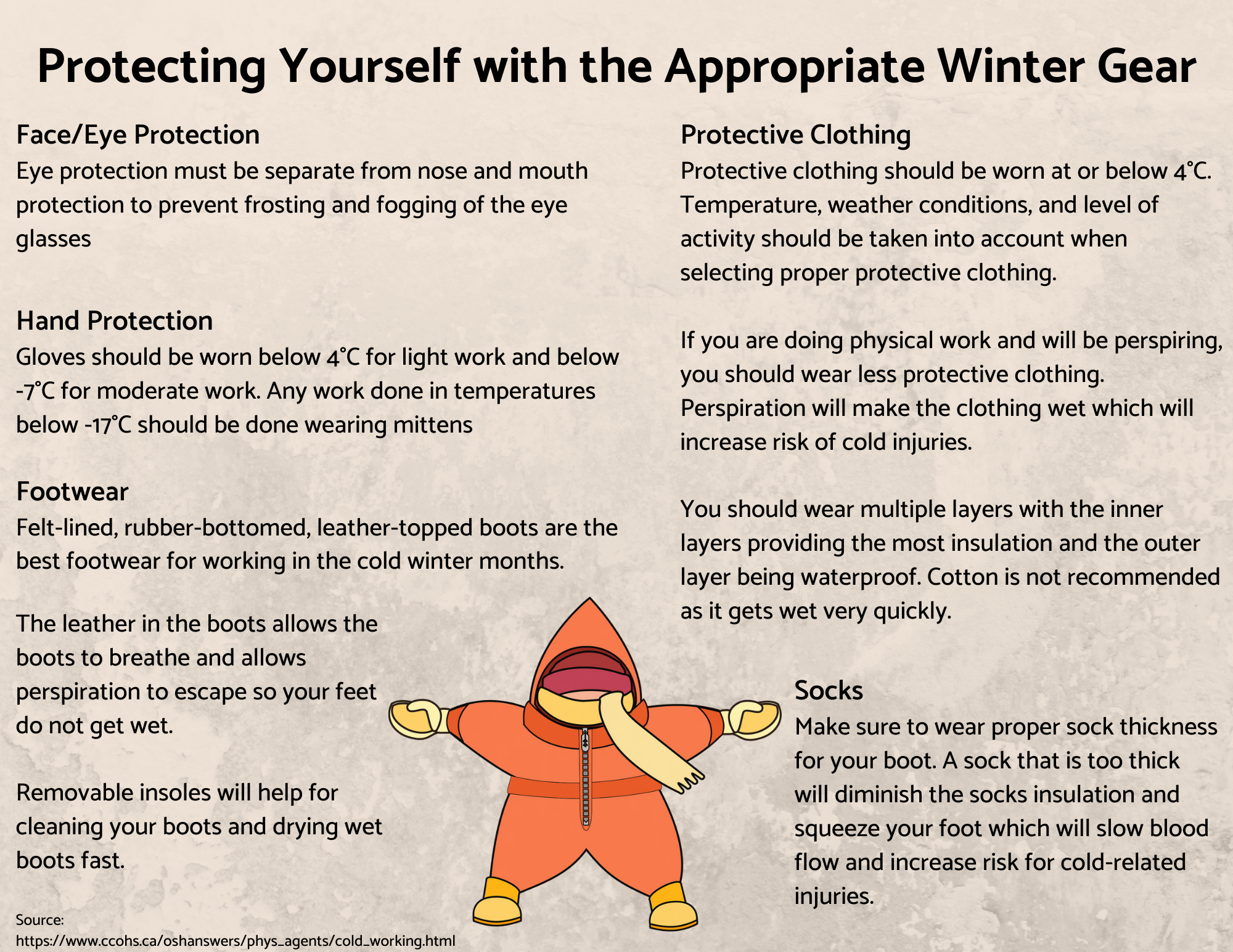We’ve been hit with our first wave of winter weather this week and it’s getting chilly and snowy out there!
Whether you’re braving the strong winds and snow as you commute to work or you’re working outdoors in the harsh winter weather, we’ve put together an infographic based on the fantastic resource provided by the CCOHS to help you combat the coming cold and snow.
As we enter into the coldest months of the year please use this guide to help acquire the proper protective gear to keep you warm.
Read the full text below or click the picture for a larger image.
Face/Eye Protection: Eye protection must be separate from nose and mouth protection to prevent frosting and fogging of the eye glasses
Hand Protection: Gloves should be worn below 4 degrees Celsius for light work and below negative 7 degrees Celsius for moderate work. Any work done in temperatures below negative 17 degrees Celsius should be done wearing mittens.
Footwear: Felt-lined, rubber-bottomed, leather-topped boots are the best footwear for working in the cold winter months.
The leather in the boots allows the boots to breathe and allows perspiration to escape so your feet do not get wet.
Removable insoles will help for cleaning your boots and drying wet boots fast.
Protective Clothing: Protective clothing should be worn at or below 4 degrees Celsius. Temperature, weather conditions, and level of activity should be taken into account when selecting proper protective clothing.
If you are doing physical work and will be perspiring, you should wear less protective clothing. Perspiration will make the clothing wet which will increase risk of cold injuries.
You should wear multiple layers with the inner layers providing the most insulation and the outer layer being waterproof. Cotton is not recommended as it gets wet very quickly.
Socks: Make sure to wear proper sock thickness for your boot. A sock that is too thick will diminish the sock’s insulation and squeeze your foot which will slow blood flow and increase risk for cold-related injuries.
Information in this blog post is via the Canadian Centre for Occupational Health and Safety here: CCOHS.

